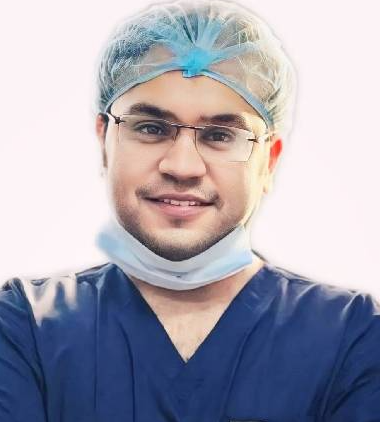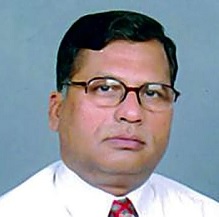Spinal Tumour Excision: Procedure, Cost, Benefits & Recovery

Treatment Duration
2 Hours
------ To ------3 Hours
Treatment Cost
₹ 2,00,000
------ To ------₹ 6,00,000

Table of Contents
- What is Spinal Tumour Excision?
- What are the Benefits of Spinal Tumour Excision?
- Who Needs Spinal Tumour Excision?
- What May Happen if the Spinal Tumour Excision is Delayed?
- How is Spinal Tumour Excision Performed?
- What to Expect Before the Spinal Tumour Excision?
- What to Expect On the Day Of Spinal Tumour Excision?
- What is Recovery and Post Op Care After Spinal Tumour Excision?
- First Follow-up Appointment
- When to Consult a Doctor?
Spinal Tumour Excision
You can check Spinal Tumour Excision Cost here.
What is Spinal Tumour Excision?
The tumours that originate in the spinal canal or nearby areas are called the "spinal tumour", and the surgical procedure for removing a tumour from the spine is called spinal tumour excision. The surgical tumour is the abnormal growth of cells in and around the spinal cord or spinal column, in the membranes covering the spinal cord, in the bones of the spine, and spinal canal.
Expert Doctors (10)
NABH Accredited Hospitals (10)


What are the Benefits of Spinal Tumour Excision?
The spinal tumour excision is an effective treatment for spinal tumours and consists of complete removal of the spinal tumour. In addition, the doctor may use spinal fusion to stabilize and reconstruct the spine after the tumour excision.
- Newer and advanced techniques for surgery minimize tissue damage and provide access to the surgeons to those areas that were once unreachable.
- Minimizes the damage to nearby nerves and improves recovery time.
- Improve and provide relief from the symptoms, prevent further loss of sensation, and treat cancer.
- Stabilizes the spine
- Reduces pain
- Prevents further loss of function by inhibiting the progression
- Improves the overall quality of life.
Who Needs Spinal Tumour Excision?
The spinal tumour excision is done for the removal of the spine tumour as it causes different signs and symptoms as the tumour grows, such as:
- Back pain which often radiates to other parts of the body
- Pain at the tumour site due to an increase in size
- Decreased sensitivity to heat, cold, and pain
- Difficulty in walking and standing
- Muscle weakness varies from severe to mild in different parts of the body
- Loss of sensation in the arms and the legs
- Back pain especially worsens at night
- Loss of function of bladder or bowel
What May Happen if the Spinal Tumour Excision is Delayed?
- It is important to treat the spinal tumour as soon as possible because if surgery or excision is delayed, the tumour will grow in size and start affecting the body's basic functions.
- It will start affecting the vertebrae of the spine, the nearby blood vessels, the meninges, the nerve roots, and cells of the spinal cord.
- The spinal tumour may also press the spinal and nerve roots causing permanent damage.
- When cancer grows in size, some of the cells break from the spinal site and enter the blood cells.
- They reach different organs and sites in the body and start growing, leading to the cancer spreading.
- Once the cancer is spread, it becomes impossible to control it and eventually leads to the person's death.
How is Spinal Tumour Excision Performed?
The surgical tumour excision is performed by a team of expert and trained neurologists. The various steps involved in the spinal tumour excision are:
- Firstly, the doctor will administer general anaesthesia to calm down and sleep during the surgery.
- Then, a technician attaches the electrical sensors to different parts of the body and will monitor your vitals. The sensors are attached to generate the electrical impulse, which stimulates the nerve and measures the reactions throughout the surgery.
- The doctor makes an incision on the back of the neck, depending on the location of the tumour.
- After making the incision, the doctor accesses the spinal canal (which contains spinal nerves and spinal cord) by removing the bone and ligament.
- The bone is cut to keep the ligament between the bones intact. The bone is removed during the surgery and is placed back at the end of the operation with the help of screws and plates.
- After removing the bone, the dura is exposed, and the tumour is removed. If it is located inside the dura or spinal cord, the tumour is removed with the help of a high-powered microscope.
- The doctor removes the tumour carefully using very fine instruments from the dura, spinal cord, and spinal nerves as much as possible safely.
- Once the tumour is removed, the dura is closed carefully with the sutures, and the bone is placed back in its original position.
- Finally, the incision is sealed with the help of the sutures beginning with the muscles, followed by all the layers and the skin.
What to Expect Before the Spinal Tumour Excision?
- You will have an appointment with the doctor a few weeks before the operation.
- The doctor will provide detailed information about the procedure to you. They will also review all your medication.
- You may be advised to stop blood thinners and supplements a week before the surgery.
- You should also avoid drinking alcohol and smoking before the surgery.
- The surgeon may advise you not to eat or drink anything after midnight a day before the surgery.
What to Expect On the Day Of Spinal Tumour Excision?
- You should reach the hospital at least 30 minutes before the surgery.
- Once you reach the hospital, the nurse will ask you to sign the content form and other documents to permit the surgery.
- Then you will be shifted to a room and asked to change into the hospital gown.
- Once done, the staff will take you to the operation theatre.
What is Recovery and Post Op Care After Spinal Tumour Excision?
- It takes on average 2 to 3 hours to complete the surgery. However, the time of surgery may vary depending on the location of the tumour and on the patient's condition.
- After the surgery, the staff will shift you to the ICU. The medical staff will monitor your condition and vitals for any complications.
- You will be given medicines for pain when needed. Once you are awake and your pulse, breathing, and blood pressure are stable, you will be shifted to the recovery room. You will be on the liquid diet for 2 to 3 days after the surgery, which will be given through an IV route.
- Once the doctor feels you are safe to move, a physical therapist will help you get up and make you walk, as immediate immobilization is important for healing. You will be discharged from the hospital after 3 to 5 days when your spine is stabilized.
- The surgeon may recommend you to join the rehabilitation centre if the doctor feels you need additional support.
- The doctor will ask you to keep the incision dry for the first 5 to 7 days after the surgery. After that, it needs to be covered with plastic wrap when you bathe. The doctor will prescribe you some medications and painkillers on the day of the discharge. The doctor may also advise the patient to take the services of a physical therapist.
- The therapist may customize the type of physical therapy, such as stretching, depending upon the requirement of the patient. It will help in reducing the recovery period and help stabilise and strengthen the spine.
- You may be asked to wear the brace to support your back for some days after the surgery.
First Follow-up Appointment
- You will have the first follow-up with the doctor after 15 days from the day of the discharge.
- The doctor may perform some imaging tests and blood tests on the day of the first follow-up.
- It is to check for any complications and recovery. The doctor will remove the dressing on your first follow-up.
- The patient requires 3 to 6 months to recover completely from the surgery. Once you receive the medical clearance from the doctor, you can begin physical exercise and return to work.
- Follow all the instructions by the doctor before returning to normal activity, exercise, and sexual activity.
- You will have a regular checkup with your doctor to ensure the tumour does not return after the surgery.
When to Consult a Doctor?
The spinal tumour excision is major surgery performed by a team of experienced doctors. However, certain complications are associated with the surgery. You should call your doctor immediately if:
- You have a fever of 101.5 degrees F or more
- Any leakage from the incision, mainly if the drainage is green or yellow
- Foul-smelling liquid from the incision
- Increase in redness and swelling around the incision
- Persistent vomiting
- Increased pain
- Numbness and tingling feeling the arms and the legs
- Seizures
- Trouble going to the bathroom and controlling the bowel movements
- Urinary incontinence
- Calf and back pain that gets worsens with each day
- Swelling in the legs
- Cerebrospinal fluid leak
Last Updated on: 11 February 2025
Author
HexaHealth Care Team
HexaHealth Care Team brings you medical content covering many important conditions, procedures falling under different medical specialities. The content published is thoroughly reviewed by our panel of qualified doctors for its accuracy and relevance.
Latest Health Articles
























